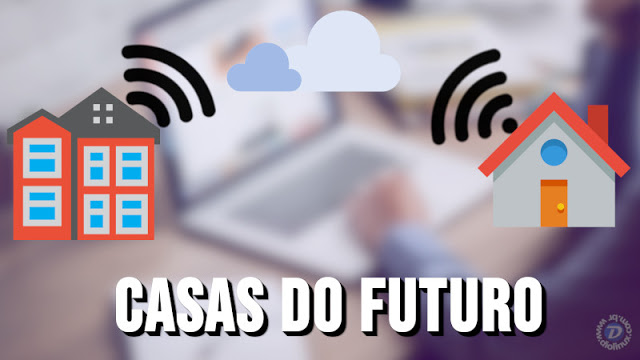
It is what we call today “Connected House”. With the increase in the speed of the internet and the sophistication of automation, the connected devices in the houses of the future (increasingly present) make life easier for residents.
Through advanced automation systems, it is possible to control and monitor several functions, such as turning the lights on and off, turning on the television, starting the washing machine or even giving a command to the coffee maker to prepare the coffee by itself.
This trend has accompanied the concept of IoT (Internet of Things), which is the digital interconnection of everyday objects with the Internet, which allows devices to be controlled remotely through another digital device, such as
smartphones or voice assistants. A survey by the Brazilian Institute of Geography and Statistics (IBGE), published in December 2018, revealed that 69.8% of Brazil’s citizens have an internet connection, which corresponds to almost two-thirds of the population. When connecting, the smartphone is already the main means of access for 97% of users, according to the same survey.
Taking this into account, the trend then is that all devices that help in the management of the connected home present the option of real-time control through the cell phone. This is already the case with cloud recording cameras, with which it is possible to monitor the live environment and view the images on the smartphone. In this way, the residence receives 24-hour monitoring, which allows the user to know in real time what happens inside their home. All this without the need for internal safety nets that weigh in your pocket.
Notice how many interesting things smart home devices can provide: smart home residents can order a driver through a locomotion app, place a delivery order at a restaurant, or even make the doors open by themselves, all being done by voice command, while the user performs other activities, enabling a multitasking posture.
Practicality is not the only focus of connected homes: savings are also part of the objectives, since through controls and monitoring it is possible to manage energy and water expenditure at the residence. Because of all these benefits, the estimate, according to Google Brazil, is that by 2021 about 327 million homes around the world will have at least one device connected, starting the consolidation of smart homes. Did you see how the future is already coming? Soon, your home may look like George Jetson’s!
This article does not end here, keep exchanging an idea there in our forum.
I wait for you next time, a big hug.
Have you seen any errors or would you like to add any suggestions to this article? Collaborate, click here.
